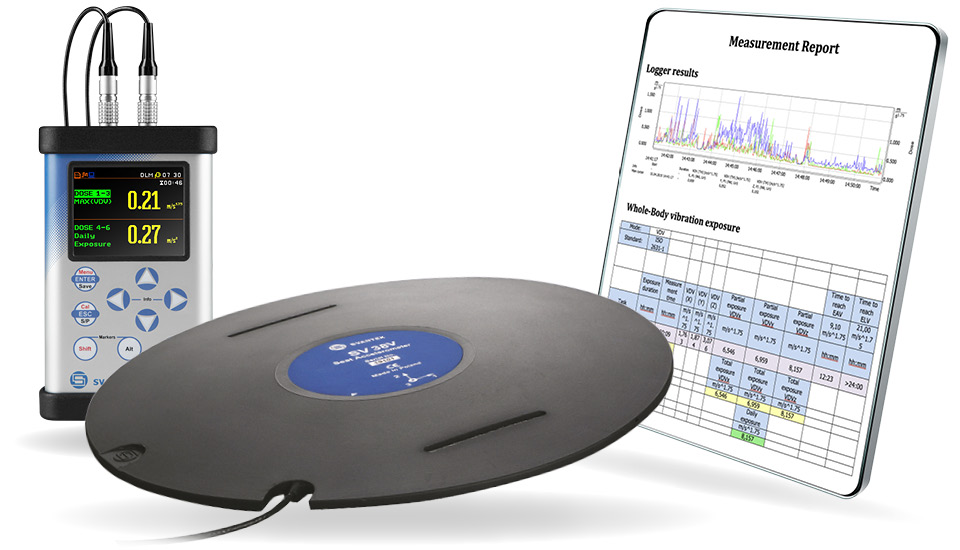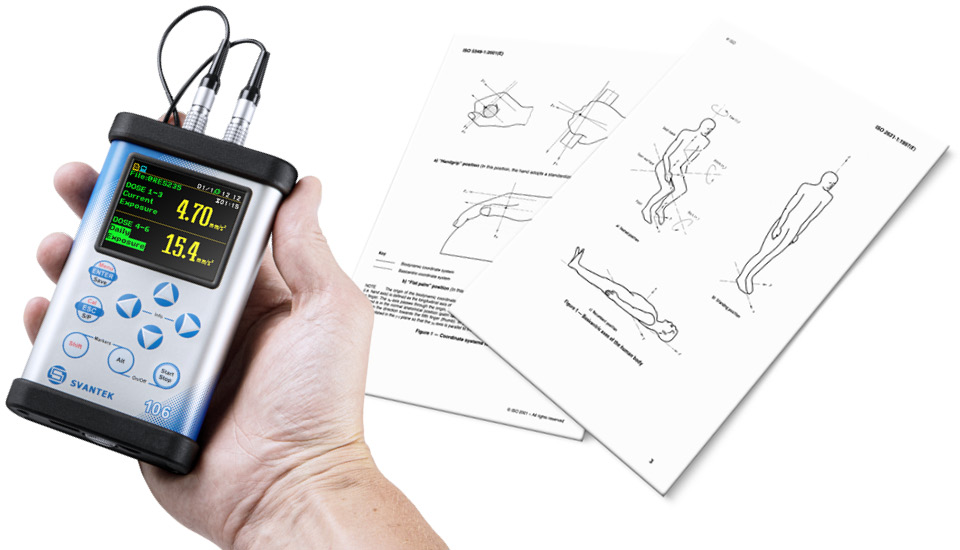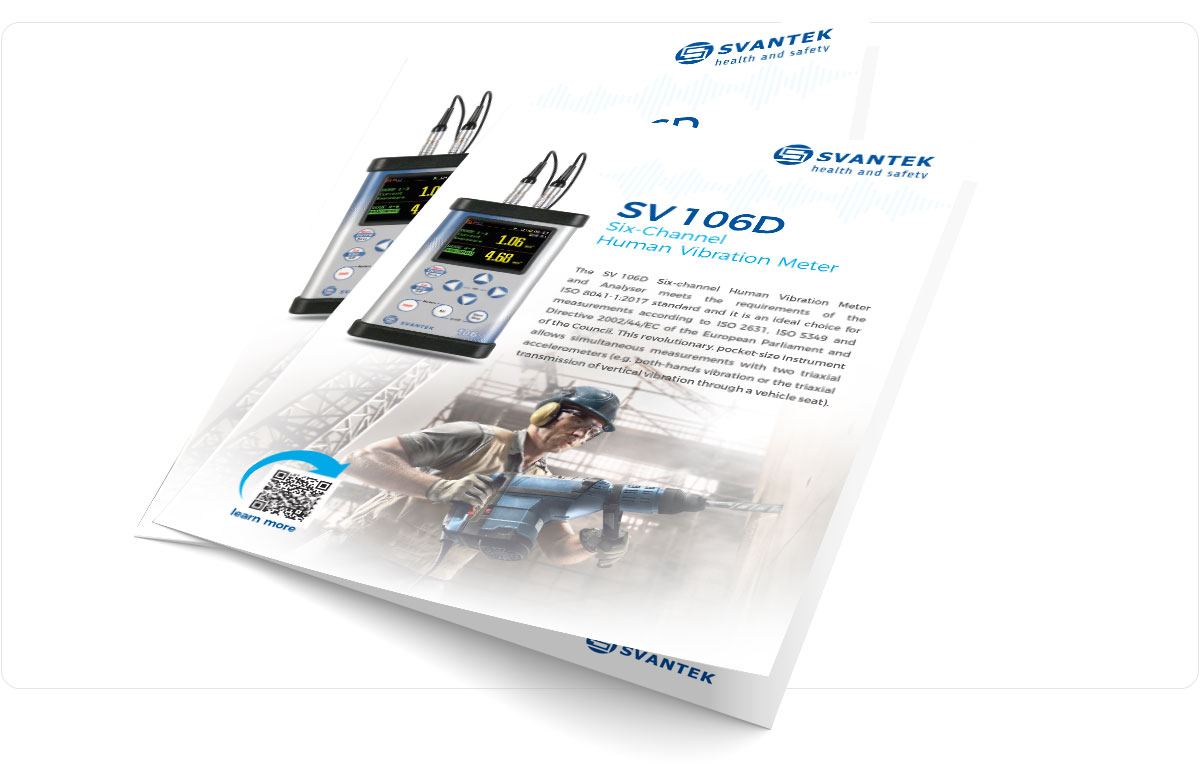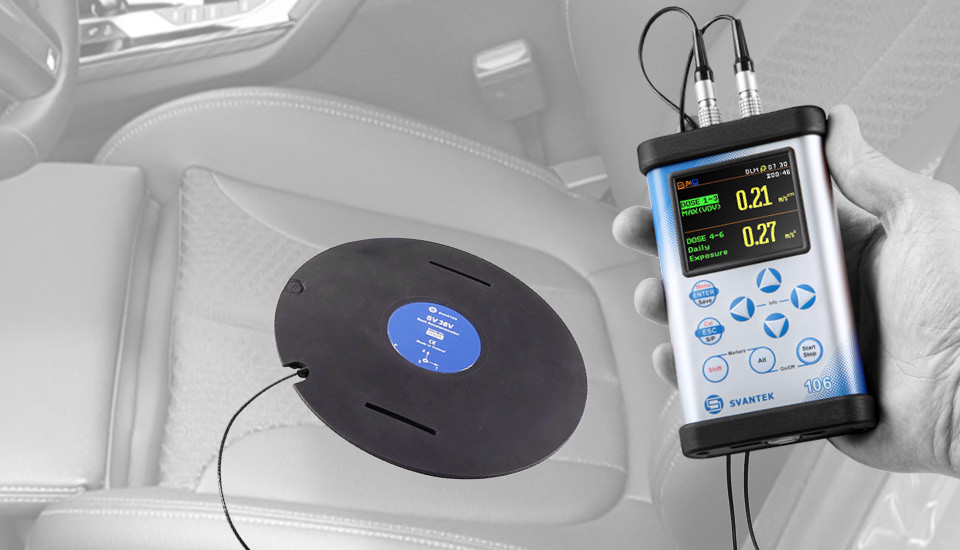SV 106D is a compact, high-precision human vibration meter and analyser that supports simultaneous six-channel measurements using two triaxial accelerometers. The instrument complies fully with ISO 8041-1:2017 and is ideal for evaluating hand-arm and whole-body vibration in accordance with ISO 5349, ISO 2631, and the European Directive 2002/44/EC. Engineers and safety specialists use SV 106D for reliable A(8) exposure calculations, triaxial SEAT transmission assessment, and tool-handle vibration monitoring. Features such as real-time octave analysis, WAV signal recording, and extended time-history logging support detailed diagnostics and reporting. The unit’s portability and power efficiency make it a field-proven solution in workplace exposure evaluations.



Hand Arm Vibration Testing
Calculation of the daily exposure A(8)

Vibration Dose Value
Calculating VDV for whole-body vibration

Types of Accelerometers
MEMS vs IEPE Accelerometers Types

Human vibrational frequencies
How do you measure human vibrational frequency?


Calculation of the daily exposure A(8)
Read more

Calculating VDV for whole-body vibration
Read more

MEMS vs IEPE Accelerometers Types
Read more

How do you measure human vibrational frequency?
Read more
The vibrations are measured by sensors that are attached to the meter with cables. The sensors are placed near the contact with the vibrating surface of industrial machinery. Take a look at some of the features that make the SV 106D the world's leading human vibration meter.

Whole-Body Vibration
What causes human vibration?
Whole-body vibration which, according to ISO 2631, are vibrations from machinery, vehicles, and industrial processes that have an impact on people's comfort, activities, and health. This type of human vibration measurement is done with sensors that are flat and in the shape of a seat pad. It is placed directly on the seat cushion, floor, or fastened to the rear of the seat.
Read more
SV 106D – Six channel human vibration meter
Applications
Hardware Features
Vibration measurement features
Please select the file and language version